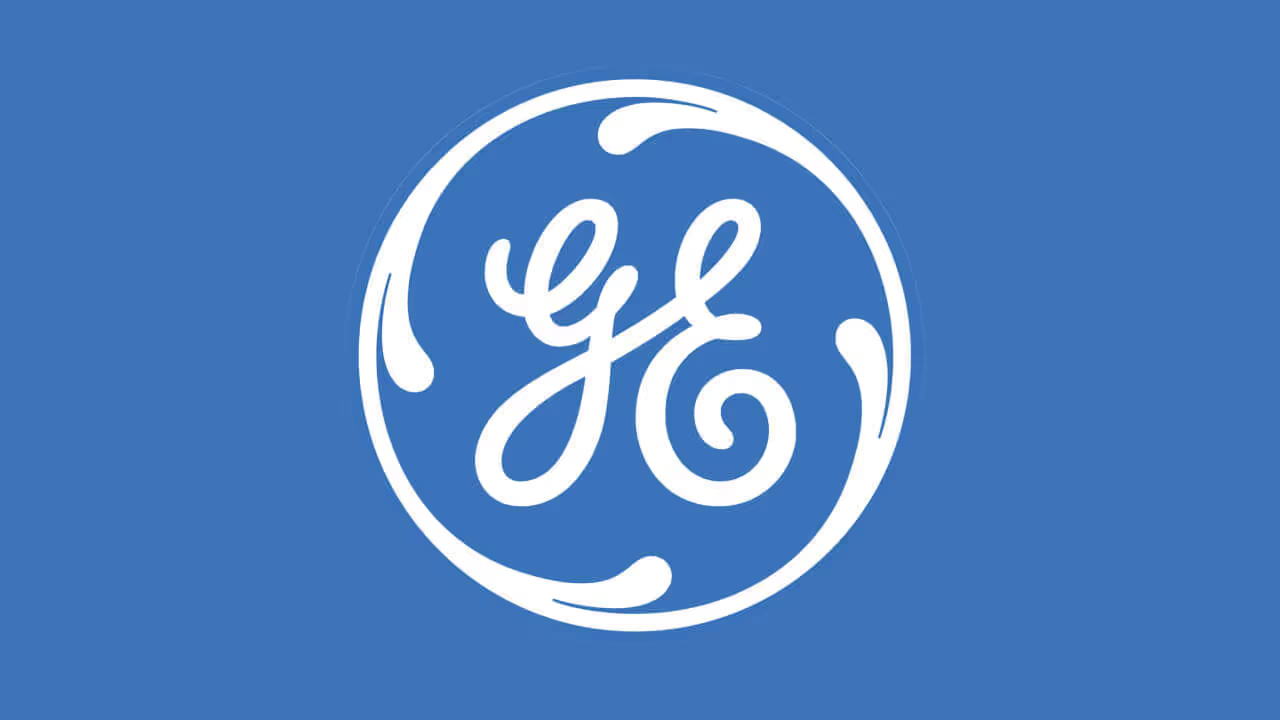One of the largest conglomerates in the USA, General Electric has been a name atop the electrical appliances, finance, energy, healthcare, and aviation for over 125 years.
The foundation of the company was laid with an idea that not only materialized into a thriving multi-million-dollar business but also very much changed the course of electrification in the world: the light bulb.
Here are a few numbers that show the immense impact General Electric continues to have to this day:
- Revenue of $79.6 billion in 2020.
- Profit of $7.3 billion in 2020.
- Boasts a share price in excess of $100 as of 2021.
- Employs a workforce of over 174000 employees.
- Global operations in 170+ countries.
- Ranks 33rd in Fortune’s List of 500 companies according to gross revenue.
Now, let us explore General Electric’s journey from the light bulb to the top of the business world.
Thomas Ava Edison & The Light Bulb
General Electric is a name that needs no introduction for any household in the USA. Fittingly, the man responsible for forming such a prestigious company is also one that the whole world recognizes: Thomas Ava Edison!
Edison’s many inventions completely transformed the way the world ran, and much of today’s progress in electrical power can be traced back to his monumental work.
.avif)
The Quest For An Incandescent Lighting System
In 1870, at the young age of 23, Thomas Edison had already shown the world his incredible talents by developing an improved stock ticker called the Universal Stock Printer. The invention also earned him $40,000.
This was just the first of the inventor/businessman’s many achievements. He went on to research, invent, and popularize the use of several technologies in subsequent years. Most notable was his pursuit of developing an electrical lighting system. At the time, gas lights were the standard around the world.
In 1876, Edison established his laboratory in Menlo Park, New Jersey. Two years later, along with his friend, Grosvenor Lowry, he laid the foundation of Edison Electric Light Company by putting up $300,000. Edison’s 50% shares in the company were on the premise that he would develop the first incandescent lighting system.
Rigorously and trying out almost 6000 materials to find out how the filament could resist the charge of electrical current for a long time, the team at Edison Electric finally struck gold in 1879. By carbonizing paper and bamboo and baking it until it became carbon fiber-like, they invented a light bulb filament that could stay illuminated for 1200 hours!

However, this was just half the solution. The company had to form a system that could generate and transmit electrical power on a much larger scale from a light bulb. This led to the invention of the first dynamo or direct-current (DC) generator, and as soon as 1880, electric lighting was used in the steamship “Columbia.”
.avif)
After that, one by one the Edison enhanced the system, building a trial electric railroad at the laboratory at Menlo Park, electric lighting in a printing plant in London, and then a full-scale system at the Holborn Viaduct.
Of course, the chain of inventions was spectacular, but simultaneously, Edison was tapping into another brilliant skill of his: entrepreneurship. He had set up separate companies for his major products, such as the Edison Lamp Company and Edison Machine Works.
These three companies owned by Edison, with a bit of help from Bergmann & Company, a switches manufacturer, pioneered a new age of electrical systems.
Moreover, in 1889, backed by the financing of J.P. Morgan and Anthony J. Drexel, Thomas Edison brought all his research and companies under one umbrella – the Edison General Electric Company. Very soon, the company had completed its first acquisition by adding Sprague Electric Railway & Motor Company to its portfolio.
The Spread of Electrification & The Formation of General Electric
While Edison’s firm was making significant inroads in electrification, other firms around the world were also catching up on their own – especially one run by Elihu Thomson and Edwin Houston: the Thomson-Houston Company.
This company already boasted several patents for its inventions, including the patent for arc lighting. But what put it head-to-head with Edison’s General Electric was its use of an alternating-current (AC) system that offered an extended electricity transmission compared to the DC motor.
For a few years, the tension between the companies resulted in patent-infringement claims, and the progress of electrics systems seemed to come to a halt.
Finally, in 1892, Drexel, Morgan & Co again became key players in bringing together Edison General Electric Company and Thomson-Houston Company to form General Electric Company – the name it carries to this day.
Edison Resigns, Coffin Assumes Control
Arguably, the merger to form General Electric was one of the most monumental ones in the history of electric companies in the US. The only downside, perhaps, was Edison’s resignation from the board.
However, Charles Coffin, the head of Thomson-Houston Company, took control and led General Electric to promising beginnings. Following the merger, several avenues opened up for the business, and it became the US’s primary supplier of electrified railway systems. One after the other, the company won contracts for other industries too, including steel, cement, and paper.
General Electric also stepped into the power transmission business, and by 1984, it was laying down power transmission lines at Niagara Falls.
The company was well on its way to transforming power systems in the US!
Key Takeaway 1: Turn Inventions Into Potential Business Opportunities
Many people remember Thomas Edison as the person who invented the light bulb. Some people may know about his other inventions too.
But what often doesn’t receive the acclaim it should, is his entrepreneurship skill. He knew he was working on something with immense potential to change the world. He formed several companies to ensure he had the funds to see it through and then capitalize on earning from it.
Thus, as his inventions proved successful, they became his product offerings, and his business thrived!
General Electric Continues To Expand
Already having firmly established itself as the company driving electrification in the US, General Electric barely had any competition in the industry.
Westinghouse Electric Company tried to offer some resistance for a while, but it too agreed to a patent pool in 1896.
The coast was clear for General Electric and began to produce every piece of equipment required for electrification systems – generators, transmission equipment, electric motors, light bulbs, and rails.
It was also one of the 12 original companies listed on the Dow Jones Industrial Average – a prestige that would be associated with General Electric for many years.
Proper Laboratory Set-Up
Up until 1900, much of General Electric's research and experimentation was being conducted at Menlo Park and other labs at private universities.
Given how fast the company was growing, it was time for a proper laboratory to be set up. Initially, it was located behind a barn of one of the company's researchers, but soon it was moved to Schenectady, New York.
Enhanced Research & Product Improvement
With the lab established, next on GE’s agenda was to improve its products.
Of course, the light bulb was due for an upgrade. So, in 1904, the team at the lab replaced the carbonized bamboo with metalized carbon. Some years down the line and the light bulb now depended on a more flexible and durable tungsten-filament –these bulbs were in use in the early 21st century too.
The tungsten material’s discovery was a breakthrough in medical fields too. It laid the platform for the first high-vacuum, hot-cathode X-ray tube, which came to be known as the 'Coolidge' tube after William Coolidge - someone who would eventually rise to very high ranks in the company.
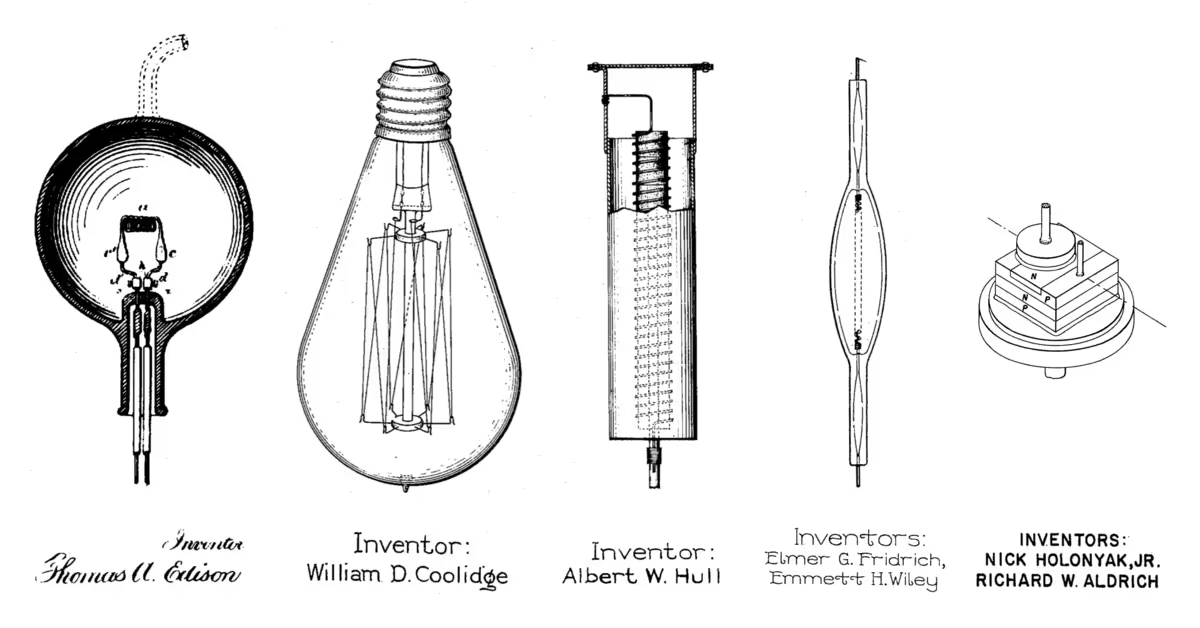
GE also made advancements in other products too. Irving Langmuir, a researcher at the company who would go on to receive a Nobel Prize for his works in chemistry, discovered that gas-filled bulbs were more efficient and longer-lasting. Thus, all bulbs above 40 watts include gas to this day.
However, the most defining and critical invention came in the form of the high-speed turbine, which transformed the productivity and efficiency of electricity-producing generators.
Before this turbine, the generators could only rotate at 100 rpm. Then in 1901, 500kW generators operating at 1200 rpm came into use, followed by even more powerful 5000KW generators in 1903. This also opened the door for GE to start producing gas turbines that would power airplanes.
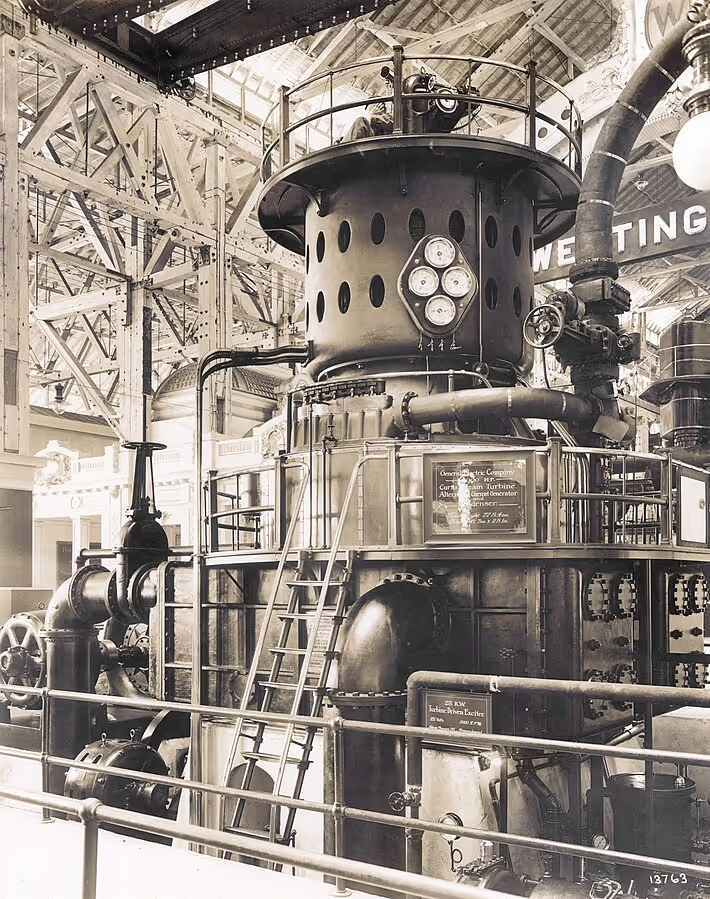
Orders, production, and resultantly, sales of electricity by General Electric reached an all-time high with almost one million kW power distributed.
Expanding Consumer Products
Gradually, electricity had penetrated the average household in the US, and General Electric looked to tap into this potential market.
Initially, the only consumer products the company produced were electric fans and light bulbs. In 1905, it introduced the toaster. The following year, it launched a line of electrical products, such as griddles, coffeemakers, waffle irons, pots, and pans. In 1911, GE developed a commercial refrigerator which it later modified for residential purposes.
However, the consumer industry was not an open platform like GE had found in the commercial market. Pacific Electric Heating Company’s products, especially the Hotpoint iron, were doing well, while Hughes Electric Heating Company's product line was also successful in the US.
Instead of battling it out, in 1918, the three companies merged into GE's heating-device division and formed the Edison Electric Appliance Company.
Branching Out From The Basics
As GE successfully integrated its products into the consumer market, it decided to further its offerings to other fields related to electronics.
Firstly, the research team, led by Charles P. Steinmetz, was tasked with experimenting with plastics for coatings, varnishes, insulation, etc., to enhance electrical wiring.
Another groundbreaking development by GE was in radio technology. Ernst Alexanderson spent nearly a decade figuring out how radio frequencies could be adjusted to extend how far they could reach. Through electromagnetic waves, he was able to propel frequencies to cover whole continents.
This prompted General Electric to set up its very own radio station in 1922. Subsequently, the company continued to progress in this arena, with Irving Langmuir developing an electron tube that amplified signals sent by radio. GE also introduced the world's first practical loudspeaker and new techniques to record complex sounds.
On the other hand, the company was also involved in building the first turbine-powered ships for the US Navy. Eventually, the entire fleet was shifted to electrical power.
Thriving Amidst The Great Depression and the WWII
For much of the Great Depression, the business did not slow down for General Electric. Instead, the company rolled a whole range of new electrical appliances for households.
Moreover, on the research end, Irving Langmuir and team produced several technologies that enhanced GE's radio and broadcasting setup. Such as the photoelectric-relay principle, rectifier tubes that eliminated the need for batteries in-home receivers, and glass-to-metal seals for vacuum tubes.
Taking broadcasting to the next level, the team also developed the frequency modulation (FM) for radio transmissions, replacing the standard amplitude modulation (AM).
Simultaneously, GE was upgrading its original product, the light bulb, by first introducing the vapor lamp and then the fluorescent lamp in 1934 – the latter being twice as efficient as the light bulb.
When WWII broke out, much of these consumer-specific items slowed down for GE. However, by War Production Board in 1942, then chairman Charles Wilson acquired huge contracts for producing military radars and marine power plants. The company even put the fighter jets powered by its engines into the air during the war.
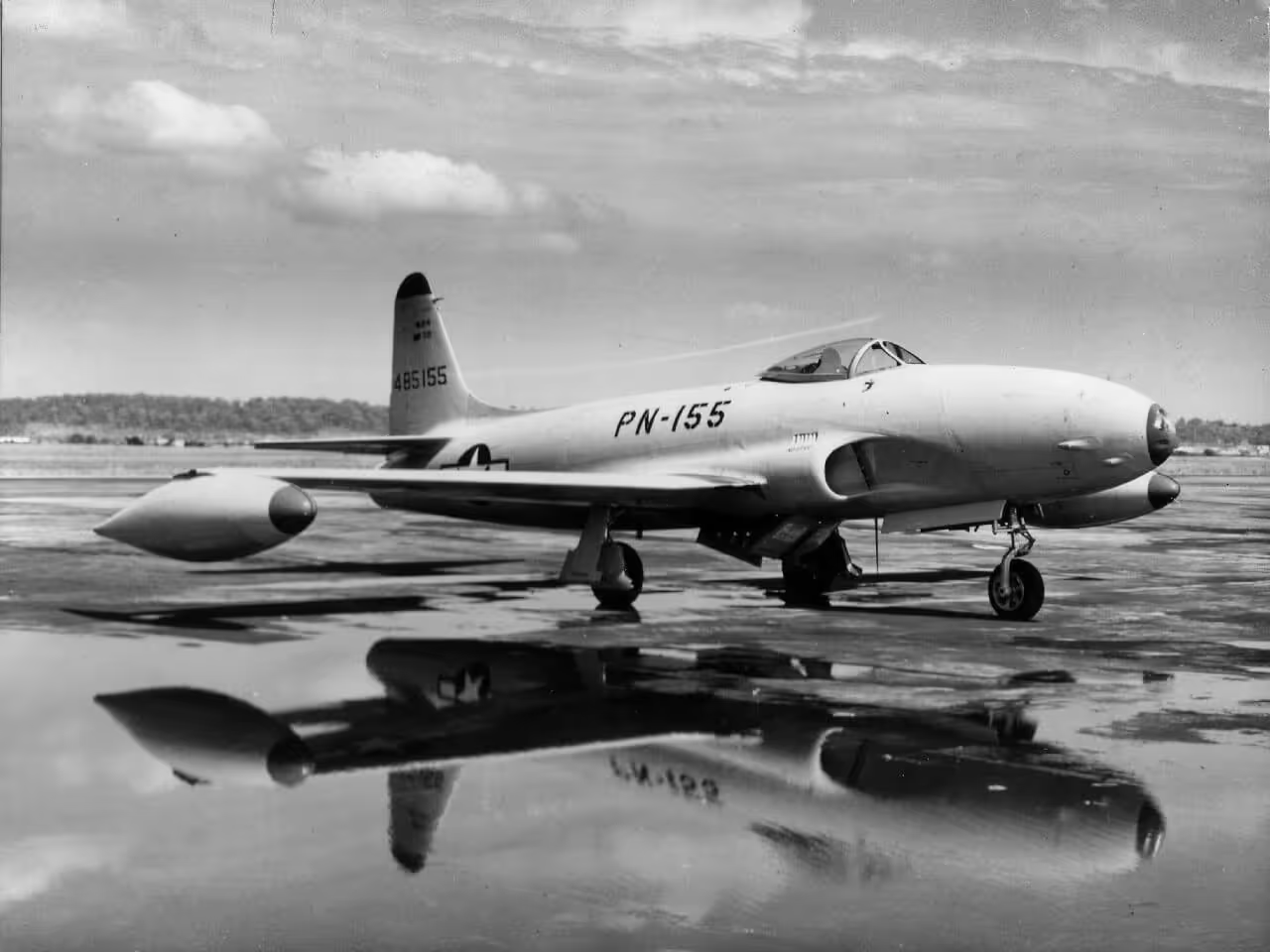
Key Takeaway 2: Diversify Offerings While Sticking To Strengths
The electric bulb, motor, and railroad were what had put the company in the limelight in the first place. But as the company grew, it realized that its core offering, electric power, could be used to produce an extensive range of commercial and consumer goods – from battleships to the radio and home appliances.
Thus, its research team played an instrumental role in coming up with solutions to enhance GE’s existing products and launch countless new ones to propel it towards unprecedented growth despite the challenges of the Great Depression and WWII.
Diversification & Key Structural Changes
By the end of WWII, General Electric had grown so large that concerns were raised by the government, and the company felt the need to diversify as well as enforce certain structural changes.
Entering The Silicone & Nuclear Businesses
GE scientists had been experimenting with ways to produce silicone to use as a lubricant and sealant for a number of years. In 1947, they were finally successful and the company set up its production plant – the first step outside the electric industry.
Post-War, General Electric also realized that there was immense potential in the nuclear industry. Thus, it set up plants to separate U-235 from uranium and power naval vessels. By 1955, Seawolf, the Navy’s first nuclear-powered submarine became operational, granting GE the license to run its own nuclear reactor from Atomic Energy Commission.
The Need For Restructuring
Over the next decade, General Electric launched multiple successful ventures and technologies, ranging from automatic pilots for jet aircrafts to diamond-fabricating techniques.
The size and diversity of the company’s operations prompted the management to consider making significant changes to its structure.
The number of operating units was brought down from 200 to 43 and each unit was assigned to a manager that would report to the upper management. Moreover, these sections were classified as growth, stability, or no-growth to decide the future course of action for each.
The Impact of Utah International
Following the restructure, the company made one of its biggest purchases yet. It acquired Utah International, a large natural resources mining and refining firm, for $2.2 billion. The takeover proved highly successful with Utah International contributing 18% of General Electric’s total earnings in the following year.
The company also reanalyzed its situation in other industries and sought to make a comeback via heavy investments worth $385 million in Intersil, a semiconductor manufacturer, Calma, a computer graphics firms, and more. It also strengthened its microelectronics facilities by plugging $100 million for expansions.
Key Takeaway 3: Adapt Structure To Meet The Needs Of The Company
After WWII, General Electric ventured into several other industries than electricity. Resultantly, the company not only grew in scale, but its operations became highly diverse.
Thus, for the company’s management to operate efficiently, it needed to consolidate its divisions for better supervision and future approach.
Hence, with the new structure, the company greatly reduced its units and identified which sectors it was better of divesting from, and which would help it grow.
Late 20th Century - A Period Of Radical Change
By the 1980s, GE was bigger than ever as the company was involved in a plethora of industries ranging from healthcare and television to power generation and computing. However, not all was good. The company's financials presented a bleak picture and raised concerns. Hence, management reshuffling was on the cards.
The Turnaround Welch Era At GE
Jack Welch took charge of the company as CEO and chairman in 1981, marking the beginning of a period of radical and much-needed change in the company.
Jack began by shifting the control of the company away from the center and decentralized management. He kept the previous system in place of classifying divisions according to their performance and set the ambitious goal of attaining either of the top two positions in each field of operations.
Automation became the buzzword within the company, and GE undertook several initiatives to enhance efficiency. GE acquired Calma and Intersil to benefit from synergies and enhance factory automation. Plus, it collaborated with Japan's Hitachi, Ltd and signed the deal for manufacturing as well as marketing Hitachi's industrial robots within the US. In addition to this, GE spent over a quarter of a million dollars to robotize its locomotion plant in Pennsylvania and even embraced an air force modernization program in its automation quest.
Encouraging results were starting to come in even in the early 1980s. General Electric Credit Corporation managed to double its assets in a period of just five years from 1979 to 1984 on the back of expansion into different markets by selling and leasing industrial goods, real estate, inventories, and insurance.
In 1986, GE made quite a few acquisitions, with the most notable being the $6.4 billion purchase of Radio Corporation of American (RCA). The National Broadcasting Company of RCA, which was the foremost television network in the US, helped GE pave its way to success in the broadcasting business. While both companies were engaged in consumer electronics and had distinct R&D centers, the merger proved beneficial for GE as it increased its size to achieve economies of scale in order to compete with the Japanese and at this crucial juncture, GE was delving into the services and technology arena, moving away from manufacturing. This became even more clear when soon after, the majority of GE's earnings began coming from services and technology.
In the same year, GE also bought Employers Reinsurance Corporation, a financial services company, for $1.1 billion, and Kidder Peabody and Company, an investment banking firm, for $600 million. These acquisitions helped GE expand its financial services division.
Growth Continues Into The 1990s
By the 1990s, GE had divided its operations into 3 distinct categories, including manufacturing, technology, and service. Manufacturing, which traditionally had been the primary area of operation, accounted for one-third of the earnings, while technology and service, albeit relatively new, accounted for the majority of the earnings and were fastly growing. Such was GE's commitment to innovation and remaining ahead of the curve that GE continued to invest in R&D even in its manufacturing arm where revenue was largely stagnant, but restructuring was paying off in major divisions as profit was increasing.
Welch was very clear in his approach. He wanted to make GE the largest company in the US and a pioneer in the world. In 1992, GE upped the ante and acquired half of the European appliance business of Britain's General Electric Company (GEC). Moreover, the company was continuously being restructured to become more competitive. The business units that were not contributing to the growth and were becoming a burden were liquidated, such as Kidder Peabody. The workforce was cut in different units including in the engineering unit and Aircraft engine group.
Realizing that the fastly growing financial services sector, which also spanned more than 3-quarters of the US economy, was an opportunity that could not be missed, GE began aggressive campaigns to expand and strengthen its footprint in the financial services sector. In spite of a global economic downtown, GE was faring well with aggregate sales amounting to $60 billion in the early 1990s. By 1995, revenues reached the $70 billion mark, and GE's market value crossed the $100 billion mark for the first time.
In the late 1990s, GE celebrated its century of being a part of the Dow Jones Index – the only company to have made it that far from the original list. In 1996, GE launched MSNBC, an around-the-clock television and internet news service in collaboration with Microsoft Corporation. A couple of years later, GE posted annual revenues exceeding $100 billion and continued to post stellar growth.
The late 1990s also brought with them a number of acquisitions as GE looked to grow through globalization and investing in the services sector. GE acquired a 73% stake in DAKO S.A., the leading manufacturer of gas ranges in Brazil, 80 percent stake in Marubeni Car System Co., an auto leasing firm in Japan, Koei Credit, consumer finance business of Lake Corporation, and Toho Mutual Life Insurance, leasing business of Japan Leasing Corporation, and Woodchester. GE Capital grew from strength to strength during this period on the back of numerous acquisitions.
While restructuring, acquisitions, and innovation within the company remained salient features in Welch's reign, he also emphasized on increasing efficiency within the business and taking quality control as well as assurance to the next level. GE adopted "six sigma" in the late 1990s to not only cut costs but also improve quality and alleviate risks. Moreover, restructuring remained a constant part of GE, with redundant facilities being closed and production shifted overseas to cheaper labor markets. In addition to this, GE embraced another growth initiative – e-business. Having realized the potential of the internet, Welch knew that it offered immense growth potential, and hence, he adopted e-commerce and explored various new opportunities presented by the internet.
Jack Welch managed to completely transform GE in a span of 20 years at the helm. He retired in April 2001, and by that time, GE was a leader in the corporate world. It was one of the fastest-growing and most profitable companies with a market capitalization of over $500 billion. He turned the company around from a mere manufacturing house with around $27 billion worth of sales in 1981 to a $130 billion conglomerate spanning all parts of the globe in an array of industries in 2001, increasing profits by 10X.
Key Takeaway 4: Never Ever Give Up
Safe to say, GE was struggling in 1981 when Jack Welch took over. He started a painful restructuring process, focused on core offerings, explored new growth avenues such as financial services, globalization, six sigma, and e-business.
All of these paid off exceptionally well for the company and breathed new life into it. Not only did the company grow exponentially, but it also built a remarkable reputation around the globe while earning hefty profits. It highlights the importance of having the right leadership, taking bold steps, and persevering through challenging times.
GE In The 21st Century
Succeeding the legendary Jack Welch, Jeffrey R. Immelt, the former head of GE Medical Systems, took charge at a critical time. With the economic downturn came the fall in revenue and the halt in growth. This was a stark contrast to the surreal era of Jack Welch, where double-digital growth had become mainstream.
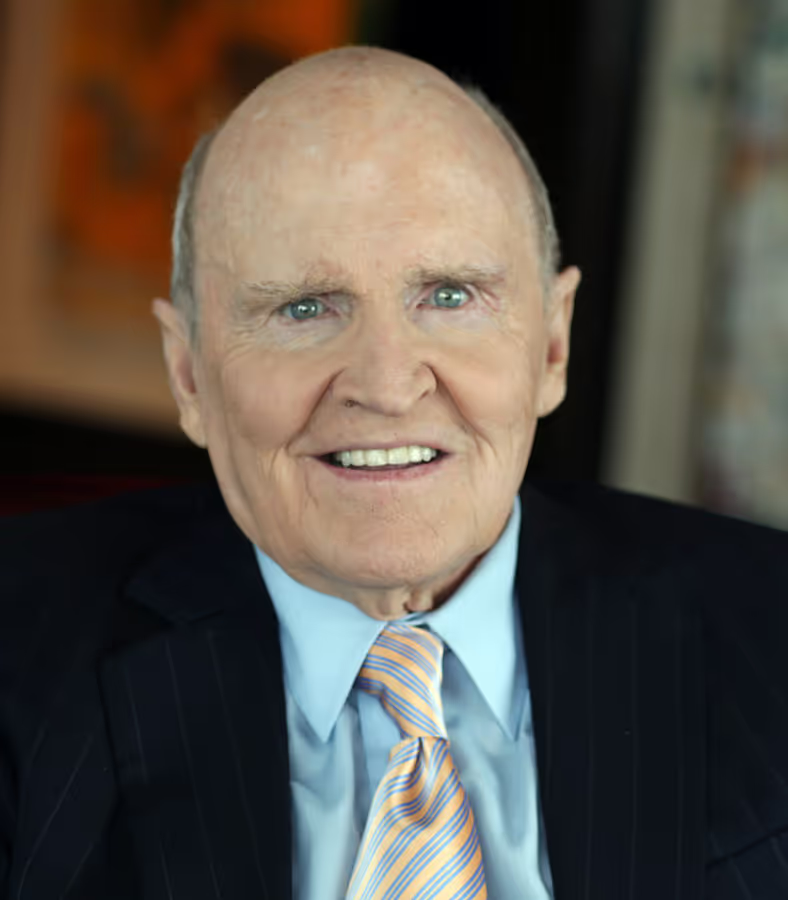
Onwards & Upwards
In 2001, GE Capital acquired Heller Financial Inc., a global commercial finance company, for $5.3 billion, and GE lighting organized the biggest product launch ever of light bulbs from GE Reveal line that were touted to provide cleaner and crisper light.
The following year GE doubled down on further restructuring of the business and acquiring new promising businesses – just like it had done in the recent past. Firstly, the crown of the business, GE Capital, was re-organized to streamline management and operations and enhance oversight and transparency. Moreover, a GE Consumers Product unit was formed by combining GE Appliances and GE lighting. In the same year, NBC acquired Hialeah, Florida-based Telemundo Communications Group Inc., and Bravo cable network. While the former gave GE the opportunity to tap into the Hispanic market by leveraging Telemundo's television network and capabilities, the latter gave NBC its first-ever entertainment-oriented cable property. Two more acquisitions were made in 2002, including that of BetzDearborn, a leading maker of water treatment chemicals, and Interlogix, Inc, an Austin, Texas-based manufacturer of electronic security products and systems. The plan was to make the most of the economic downturn and acquire the promising yet dis-tressed assets for a bargain price.
In 2003, GE went the extra mile and acquired a plethora of companies. From further strengthening its financial services division by acquiring Transamerica Finance Corporation's commercial lending business to investing in the growing healthcare sector by acquiring Instrumentarium Corp, a medical-equipment maker, and Amersham plc, a British firm specializing in diagnostics agents. That was not all. GE also made its largest-ever acquisition of Vivendi Universal Entertainment (VUE), the US unit of the French group Vivendi Universal SA. Consequently, NBC was merged with VUE to form NBC Universal, and well the rest is history.
Immelt, meanwhile, continued with the reorganization of the company, transforming it for good. His plan was to bring together similar businesses to benefit from synergies and cut down costs. Hence. GE Transportation Unit, GE Consumer & Industrial, and GE Infrastructure were formed, and various relevant divisions were merged together under them. Moreover, divestments were continuously made to eradicate any units that were not performing up to the expectations and had become a liability for the company. Immelt was keen to cut down the company's over-reliance on financial services and embrace healthcare as well as entertainment, given that both were high growth areas. Also, GE was committing to expand operations in other emerging and fastly growing economies such as China.
Here Comes The Great Recession
Just when GE seemed to have gotten it in control, the 2008 financial crisis hit. The vulnerabilities were exposed. GE's financial segment was on the verge of collapsing, and with that, it was threatening to topple the entire company. However, Warren Buffet invested $3 billion in the company to keep it afloat.
%2520(1).avif)
Given the near-death experience, GE stripped-down GE capital and returned to its manufacturing roots.
In the following years, restructuring and acquisitions ensued in all the different industries, ranging from healthcare and energy to aviation and finance, to slim down the company.
On the occasion of GE's 125th birthday, there was little to celebrate. Jobs were cut. The stock price was tumbling, losses were mounting, the CEO was replaced, and broad restructuring was looming.
With the new CEO, H. Lawrence Culp, in charge, there came in some respite. He turned around the company albeit slightly by 2019. He reduced debt, divested units and companies that weren't delivering, and managed to raise substantial capital for GE to invest in new avenues.
In 2020, GE, just like all other companies worldwide, was struck by the Covid-19 pandemic, and its different business units, aviation, in particular, witnessed a huge setback.
As of 2021, GE has bounced back from an unforgettable year. It solidified its healthcare division by acquiring BK Medical, an ultrasound maker, and is transforming into a focus, simpler, and high-tech company consisting of three segments, including aviation, healthcare, and renewable energy, power, and digital – all essential to modern life.
Key Takeaway 5: Pursue What Works & Let Go Of What Doesn't
Even in the 21st century, GE continued to restructure its vast business. Divesting divisions and units that weren't performing up to the expectations and acquiring companies in the high-growth segment of healthcare and entertainment became the new normal.
While things weren't easy given the economic downtown at the turn of the century and the 2008 financial crisis, which threatened to topple GE. However, even in challenging times, the company looked for opportunities to buy distressed companies, re-organize and streamline its own business, and expand overseas in a bid to achieve cost-efficiency as it did in China.
Key Strategic Takeaways
There’s no other company that better defines American industry and corporate culture than GE. An iconic company that started back in the 19th century and fueled the growth of industrial America with its light and electricity, GE continues to remain a household name.
Today, GE is focused on shaping the future by shaping the future of flight, providing healthcare solutions, and leading the energy transition.
While GE has no doubt lost its footing and has had a publicized free-fall, it definitely isn’t out of the running, and one thing that we can all expect is GE to bounce back.
Innovate Like Your Life Depends On It
There’s always room to do things better. By innovating and coming up with new products and solutions that add value to people’s lives, one can highly benefit. This is where innovation comes in. Thomas Edison made a significant difference with his chain of inventions, beginning with the lighting system. His legacy lived on through GE as the company embraced innovation to become the pioneers in the business world.
Diversify By Expanding
GE has never restricted itself. No industry or country is out of the reach of GE. Starting from the light bulb in the US to a portfolio spanning multiple industries and 170 countries, GE diversified its business over time in order to grow exponentially. It underlines the importance for businesses to think big and never limit themselves.
Always Look Out For Opportunities
GE has over the years acquired dozens of companies all around the globe. Thanks to the proactive approach and a keen eye for growth segments as well as promising companies, GE enhanced its own offerings, cut down costs, and provided exceptional values to its esteemed customers. That’s not all. The company also embraced globalization, automation, e-business, six sigma, among a number of other opportunities to scale up.
Review, Rethink & Reform
Not everything went according to GE’s plan. There was cut-throat competition, World Wars, economic downturns, Covid-19 Pandemic, failures in certain divisions, inefficiency, mismanagement, and acquisitions gone wrong. But GE kept bouncing back. It took the difficult steps to divest, cut jobs, restructure the business, and re-organize as and when needed to streamline operations and expand. What standout is that even during difficult times, GE adopted a positive approach to carefully review and rethink what and how things went pear-shaped and what could be done better. It has, without a doubt, enabled the company to come back from disappointing lows time and again.


